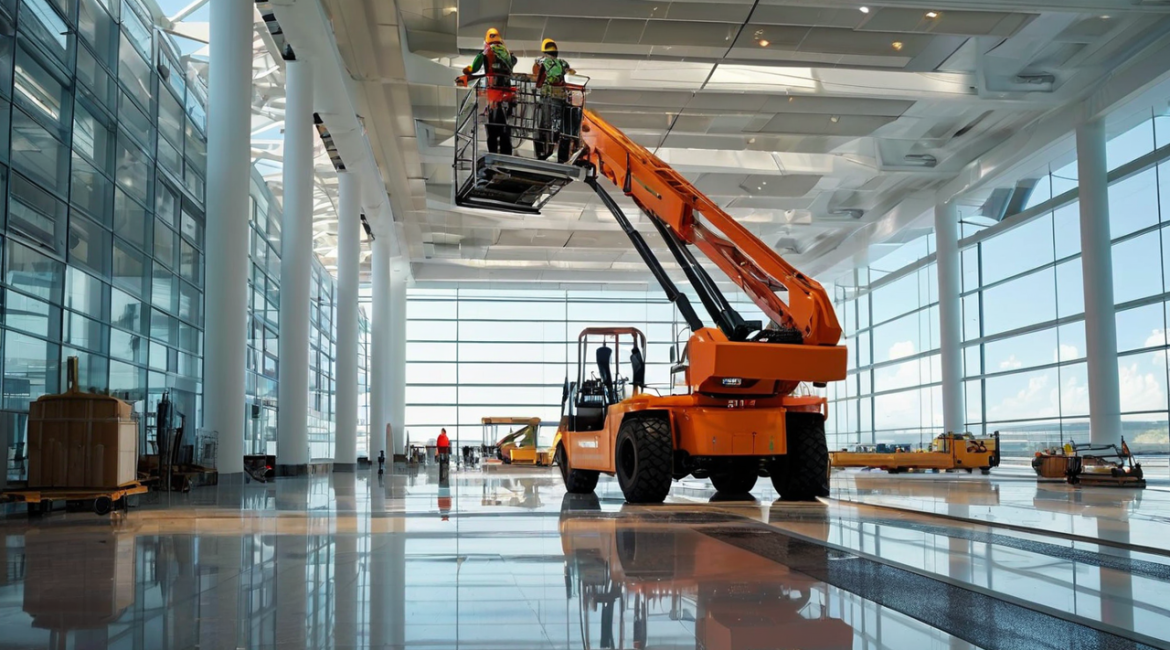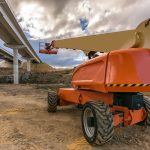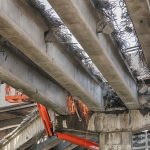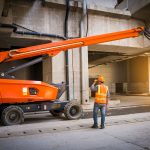Introduction
Airport operations are highly complex and demand a high level of efficiency and safety. From routine maintenance to emergency repairs, the tasks performed at airports often require access to elevated areas. Aerial Work Platforms (AWPs) have long been essential in facilitating these operations, offering a safer and more efficient alternative to traditional methods like scaffolding and ladders. In recent years, technological advancements have led to significant innovations in AWPs, further enhancing their capabilities and benefits. In this blog, we will explore some of the latest innovations in AWPs and how they are transforming airport operations.
The Role of AWPs in Airport Operations
Aerial Work Platforms are used in a variety of tasks across airport environments, including aircraft maintenance, terminal repairs, lighting inspections, and construction projects. These platforms provide a stable and secure means for workers to access high and hard-to-reach areas, ensuring that tasks are performed safely and efficiently. With the constant push for improved safety standards and operational efficiency in the aviation industry, innovations in AWPs are playing a crucial role in meeting these demands.
Key Innovations in Aerial Work Platforms
- Hybrid and Electric AWPs As airports strive to reduce their carbon footprint and meet sustainability goals, the demand for environmentally friendly equipment has grown. Hybrid and electric AWPs have emerged as a solution, offering the same performance as traditional diesel-powered models but with significantly lower emissions. These AWPs are quieter, making them ideal for indoor operations and sensitive environments within airports, such as passenger terminals.
- Advanced Safety Features Safety is paramount in any airport operation, and recent innovations in AWPs have focused on enhancing safety features. Modern AWPs are equipped with advanced stability control systems that automatically adjust the platform’s position to prevent tipping. Additionally, sensors and alarms can detect potential hazards, such as obstacles or uneven ground, and alert the operator in real-time. These features reduce the risk of accidents and enhance overall safety during operations.
- Telematics and Remote Monitoring The integration of telematics into AWPs has revolutionized the way these machines are managed and maintained. Telematics systems provide real-time data on the platform’s location, usage, and performance, allowing operators to monitor equipment remotely. This technology also enables predictive maintenance, where potential issues can be identified and addressed before they lead to costly downtime or repairs. For airport operations, where efficiency is critical, telematics helps ensure that AWPs are always in optimal working condition.
- Compact and Agile Designs Airport environments can be congested, with limited space for maneuvering equipment. To address this challenge, manufacturers have developed AWPs with compact and agile designs. These platforms can navigate tight spaces and be easily transported across different areas of the airport. Some models even feature zero-tail swing, allowing for better maneuverability in confined areas. This innovation ensures that AWPs can be used effectively in all parts of the airport, from the hangar to the terminal.
- Enhanced Ergonomics and Operator Comfort The comfort and safety of operators are critical to maintaining productivity and reducing the risk of fatigue-related errors. Innovations in AWPs now include enhanced ergonomics, such as adjustable controls, cushioned seats, and improved visibility. These features help operators maintain focus and work more efficiently, even during long shifts. Additionally, platforms with smoother controls and reduced vibration contribute to a more comfortable and safer working environment.
- Increased Lift Capacities and Reach To meet the demands of larger aircraft and expansive airport facilities, AWPs have seen improvements in their lift capacities and reach. Newer models can extend to greater heights and carry heavier loads, allowing for more versatile use in airport operations. This increased capability means that a single AWP can perform a wider range of tasks, reducing the need for multiple pieces of equipment and improving overall efficiency.
Applications of Innovative AWPs in Airport Operations
- Aircraft Maintenance AWPs with enhanced reach and lift capacities are ideal for performing maintenance on larger aircraft, such as wide-body jets. The advanced safety features and ergonomic designs ensure that maintenance crews can work efficiently and safely, even at significant heights.
- Terminal and Facility Maintenance The compact and agile designs of modern AWPs make them perfect for use inside airport terminals and other facilities. Whether it’s repairing ceiling fixtures, cleaning windows, or inspecting HVAC systems, these platforms provide the flexibility and precision needed to navigate crowded or confined spaces.
- Lighting and Signage Installation AWPs are commonly used for installing and maintaining airfield lighting and signage. The stability control systems and remote monitoring capabilities of the latest AWPs ensure that these critical tasks are carried out accurately and safely, with minimal disruption to airport operations.
- Construction and Renovation Projects During airport expansion or renovation projects, AWPs with increased lift capacities and advanced safety features play a vital role. They enable construction crews to reach elevated areas safely, handle heavy materials, and work efficiently on large-scale projects.
Conclusion
The aviation industry is constantly evolving, and the demands on airport operations continue to grow. Innovations in Aerial Work Platforms are helping to meet these challenges by providing safer, more efficient, and environmentally friendly solutions. From hybrid and electric models to advanced safety features and telematics, these innovations are transforming the way airports operate, ensuring that maintenance and construction tasks are performed with the highest standards of safety and efficiency. At CESL, we are committed to staying at the forefront of these technological advancements, providing training and expertise that empower airport personnel to make the most of these cutting-edge tools.






rent exotic cars miami
This was an excellent read. Very thorough and well-researched.